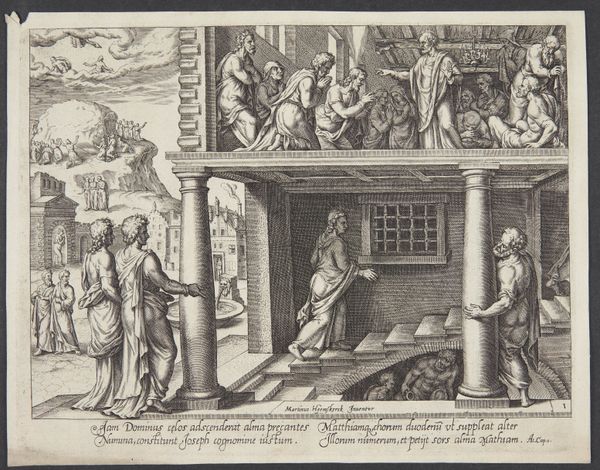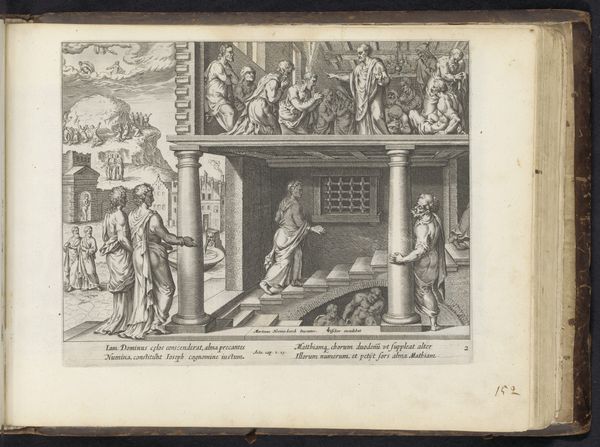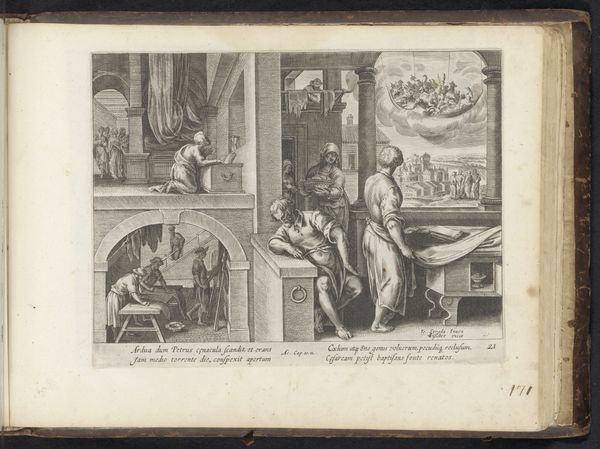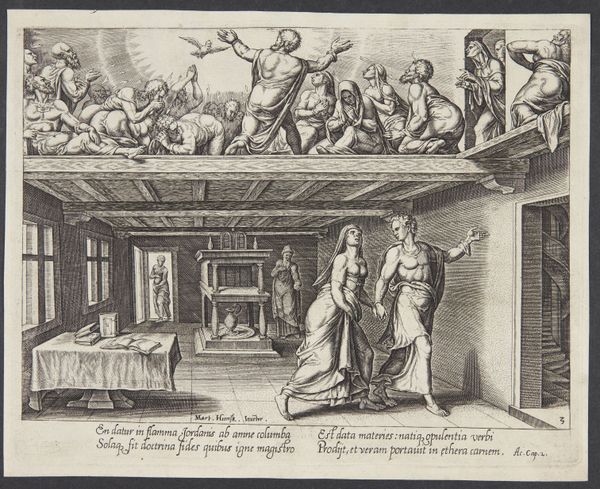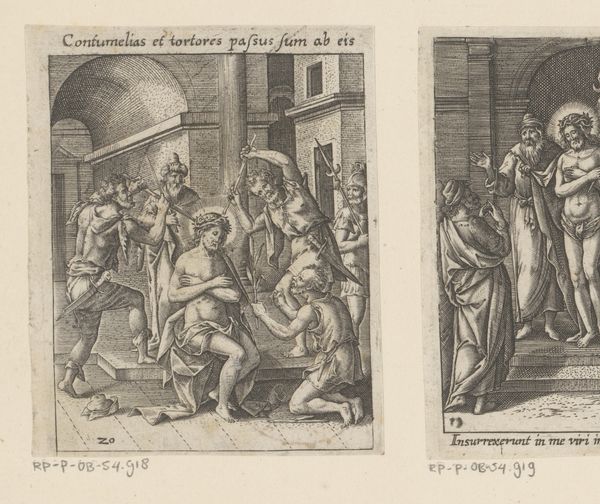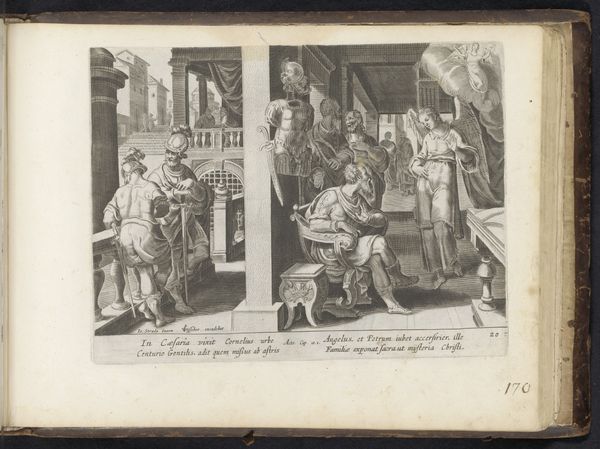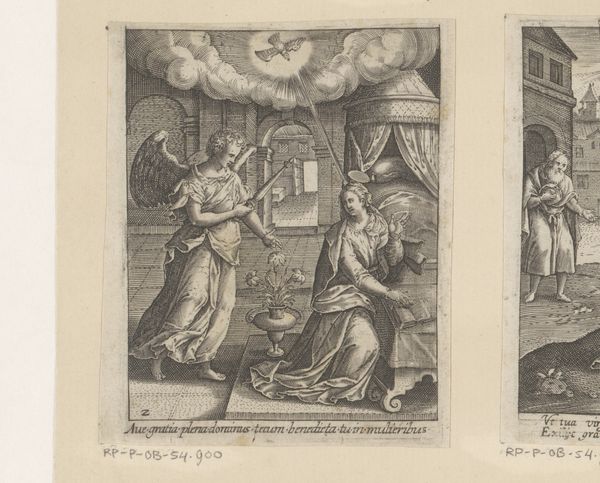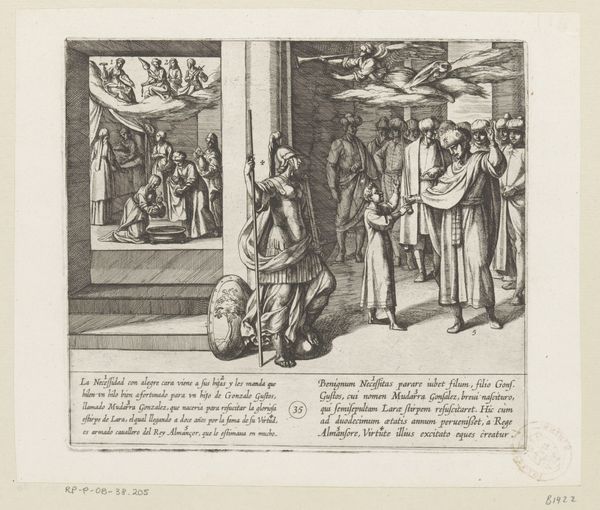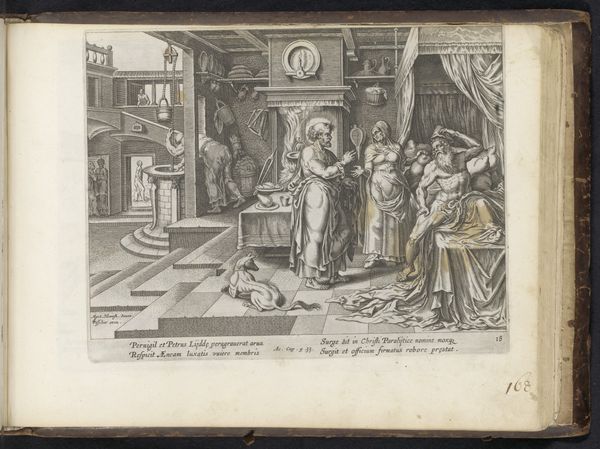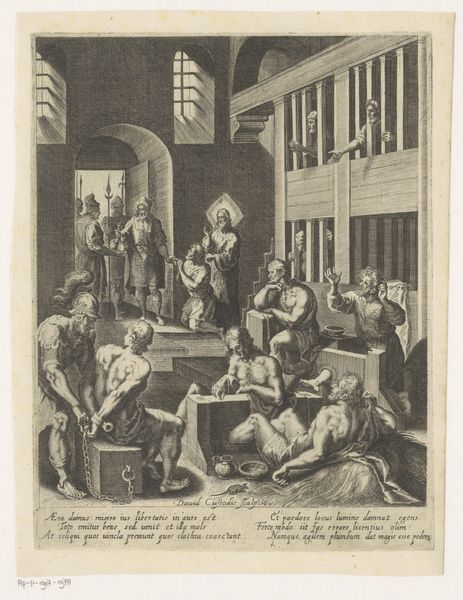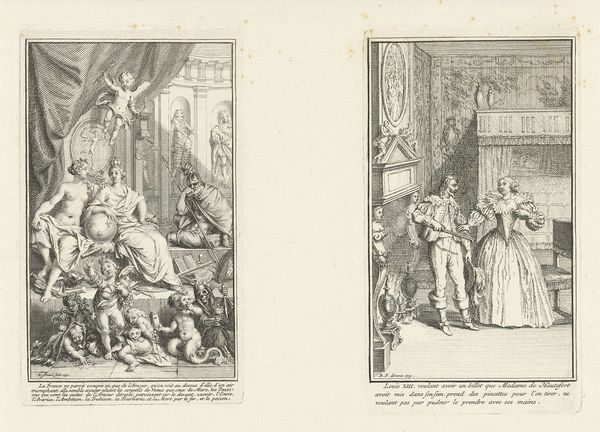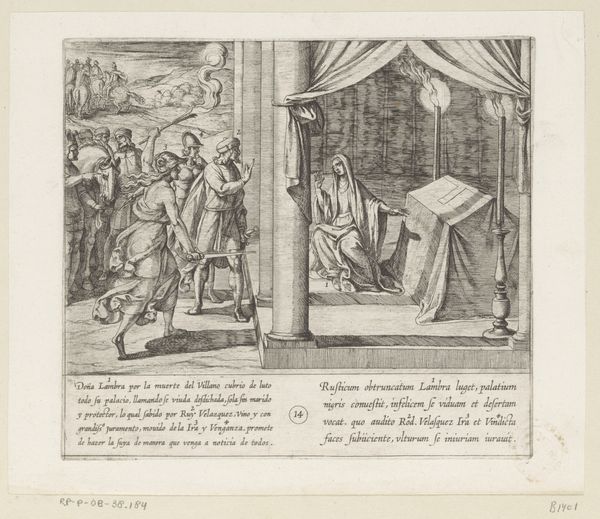
print, etching, engraving
#
narrative-art
# print
#
etching
#
figuration
#
11_renaissance
#
line
#
history-painting
#
northern-renaissance
#
engraving
Dimensions: 213 mm (height) x 275 mm (width) (plademaal)
Curator: Looking at "St. Peter raising Tabitha at Joppa", a 1575 engraving by Philips Galle after Maarten van Heemskerck, what are your initial thoughts? Editor: It strikes me as both incredibly detailed and quite emotionally detached. The linework is precise, almost clinical, despite the scene depicting a resurrection. It is emotionally evocative, the rigid architecture emphasizes a rational and hierarchal control over nature. Curator: Indeed, Galle masterfully uses line to create this complex narrative. The print illustrates the biblical story of Tabitha being brought back to life by Saint Peter. You mentioned hierarchy—do you think it presents more than religious structure? Editor: Absolutely. This piece operates on multiple levels. The women on the left embody a controlled emotionality as they present Tabitha for her ritual purification before being presented alive again. They and all surrounding Tabitha serve to amplify St. Peter. Consider the broader implications here; religious narratives used to reinforce social norms around gender and class during the Northern Renaissance. Curator: I see your point. The resurrection miracle underscores not only divine power, but also the earthly authority vested in St. Peter. In terms of its imagery, let’s think about the symbol of water used as a means to physically bring her back. How are women symbolically positioned between social hierarchies of the mortal world and what we culturally see as religious purity and the eternal afterlife? Editor: Precisely! Notice the distinct visual separation. Tabitha’s body on display in the bed chamber creates a stark separation from life with clear gendered labor of purification on display. It's this conscious choice of scene construction that allows Galle to weave a compelling tale of faith. There's a rich blend of human experience filtered through the visual vocabulary of the era. Curator: Thanks for sharing that. It reminds us that even seemingly straightforward historical illustrations carry a wealth of contextual meaning about what we accept, deny, and pass down in cultural narratives. Editor: It's been illuminating for me, as well, and underscores that it's so often the very formal composition that provides insights into what really mattered in the history of our species.
Comments
No comments
Be the first to comment and join the conversation on the ultimate creative platform.

